Callicarpa americana
(Beautyberry)
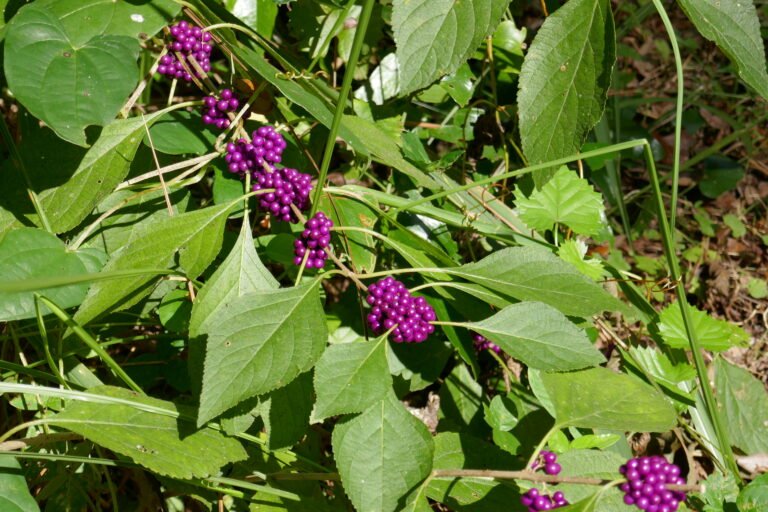
Common Names, Latin Name and Family
Other common names include French mulberry, Bermuda mulberry, foxberry, and turkeyberry.
The Latin name is Callicarpa americana.
It is found in the Lamiaceae, or mint, family.
Its name comes from the Greek calli for ‘beautiful’ and carpa for ‘fruit’.
The common name ‘French mulberry’ comes from eighteenth century English. The English settlers in the New World despised their French counterparts and named this berry, which they found bland and unpalatable, after them.
Form
Individuals grow to approximately 8 feet in height, and almost as wide, with an open branching habit.
It grows in average to dry soils in part shade. It can tolerate full sun if given enough water or protected by larger plants during the heat of the day. It flowers and fruits very well in either setting.
Leaves
The leaves are deciduous, opposite, simple, elliptic in shape, and have finely toothed margins.
A covering of hair gives young stems and the undersides of leaves a white appearance.
Each hair contains an oil gland that gives the plant its distinctive odor.
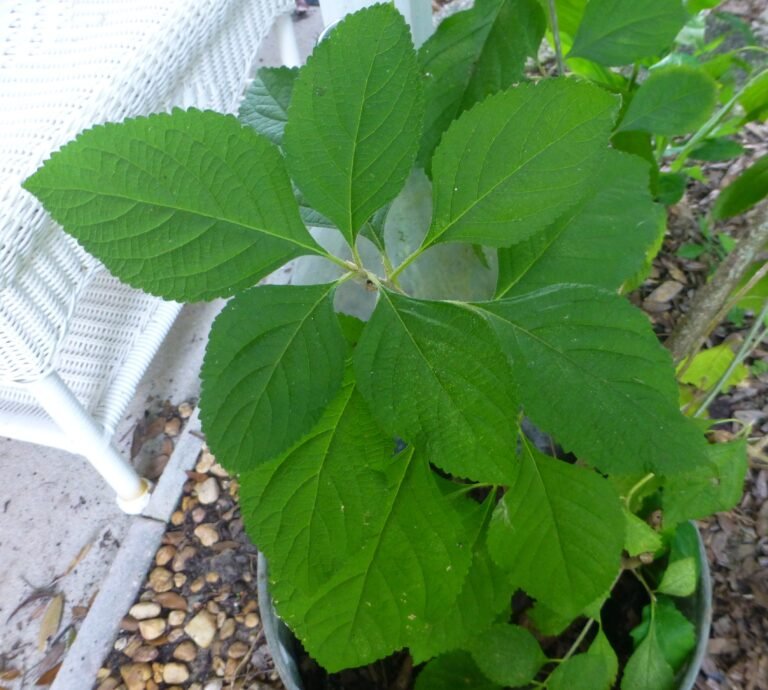
Flowers
Small pink flowers are found in axillary clusters, in whorls around the stem, and appear in the spring and summer providing food for pollinators.
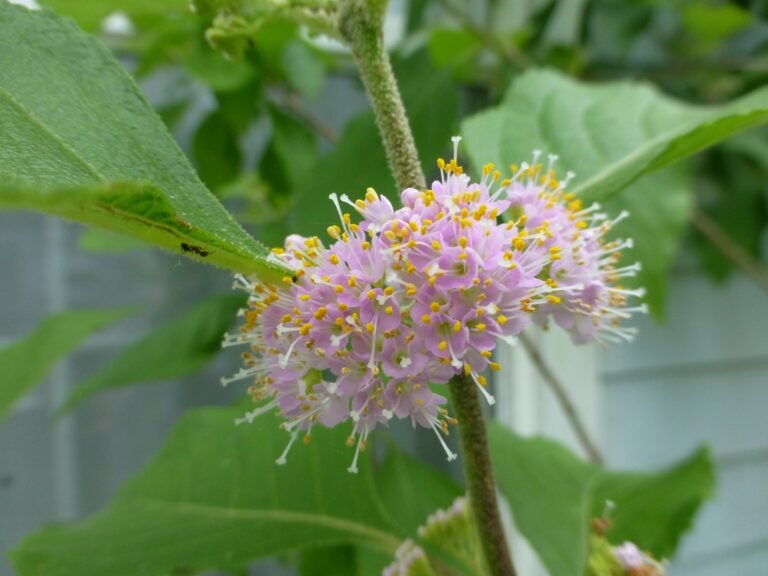
Fruit and Seeds
The berries, which are only a quarter of an inch wide, are a beautiful magenta color and are quite striking in winter when the otherwise obscuring leaves have fallen from the plants.
There is also a naturally occurring white fruited form which looks beautiful inter-planted with the magenta form, (white forms can be seen in the Torreya and Highlands Hammock State Parks).
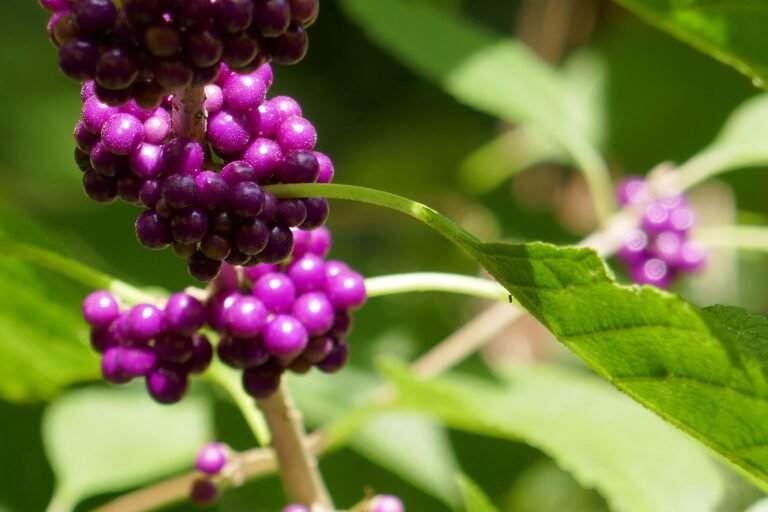
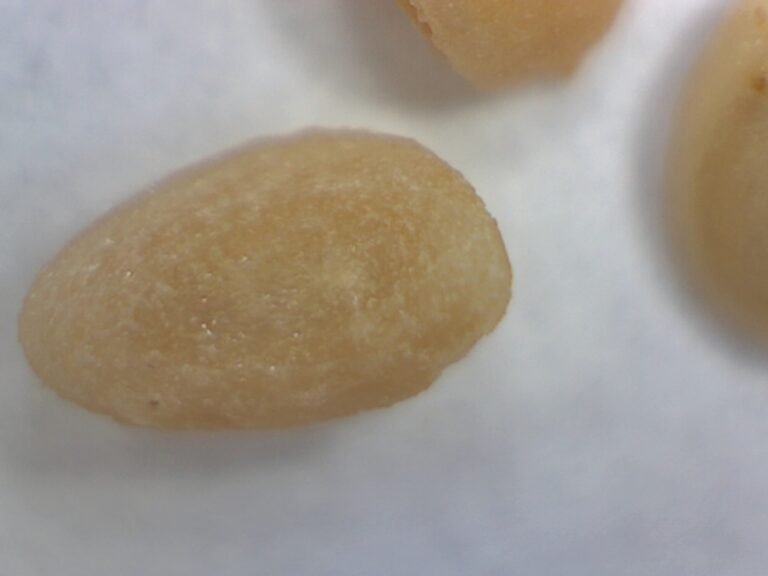
Habitat
Beautyberry can be found growing in woodlands, pinelands, and thickets.
Native Range
Beautyberry is found naturally occurring in every county of Florida.
It also occurs in Bermuda, Cuba, and Mexico.
Landscape Use
Plant your beautyberry in full sun to part shade with dry to moist soils. Once established it is virtually maintenance free.
Pruning is not necessary even after a frost, but pruning close to the ground each year will generally keep the plant more compact – approximately four feet high by four feet wide.
Growing in a wide variety of light and soil conditions, beautyberry, Callicarpa americana, is a welcome addition to the home landscape, and the local wildlife will greatly appreciate this additional winter food source.

It is generally overlooked as a landscape plant, however, when used it adds color and texture to the landscape, as well as food for wildlife. Both novice and expert gardener will be rewarded by its resilience and beauty.
Wildlife Use
The flowers are used by a wide variety of pollinators, but not so much by butterflies. The usual visitors are bees, bee flies, and wasps.
The berries are not only incredible to look at, but they also provide an important winter food source for wildlife. Wild turkeys, bluebirds, robins, yellow bellied sapsuckers, myrtle warblers, cardinals, catbirds, mockingbirds, brown thrashers, quail, towhees, and many other birds rely on the berries as an energy source. Mockingbirds may establish a territory around specific plants and not allow other birds to feed there, possibly fooling the property owner into believing that the berries are not a desirable food source. Additionally, the berries provide a food for mammals such as raccoons and gray squirrels during the lean times of winter.
Human Use
Although bland, the berries are edible and can be used to make a pale, tasty jelly.
The taste is reminiscent of the fragrance of the crushed leaves and fruit – a very unique floral flavor.
The roots and leaves were used medicinally by American Indians to make a tea for use in sweat baths to treat fever, rheumatism, and malaria. Root tea was also used for treating dysentery and colic.
In the South root and berry tea was used for dropsy (accumulation of diluted lymph in the body tissues) and as a ‘blood purifier’ in treating skin diseases.
Propagation
It can be propagated by seeds, cuttings and transplanting.
This is by far the easiest plant to transplant … just be sure to remove any flowers or berries to allow the plant to recover more quickly.
Cuttings should be kept moist while transplants should be watered regularly until they become established.
Propagation can also be achieved with ripened seeds that have been cleaned and stored at room temperature until the next growing season. Each fruit contains four seeds; fresh seeds can take as long as three months to germinate.
Next Article: Blackberries Native to Central Florida
